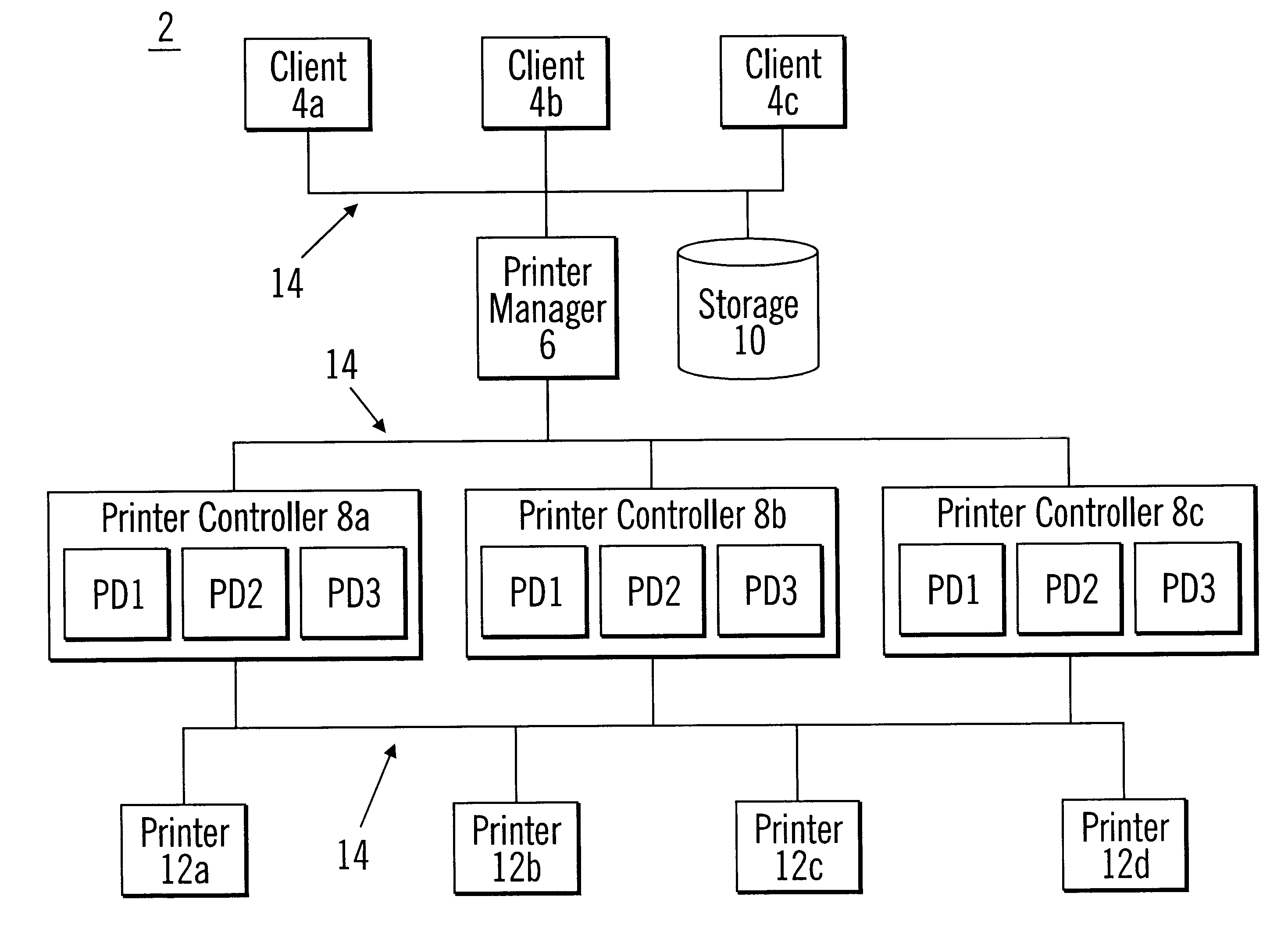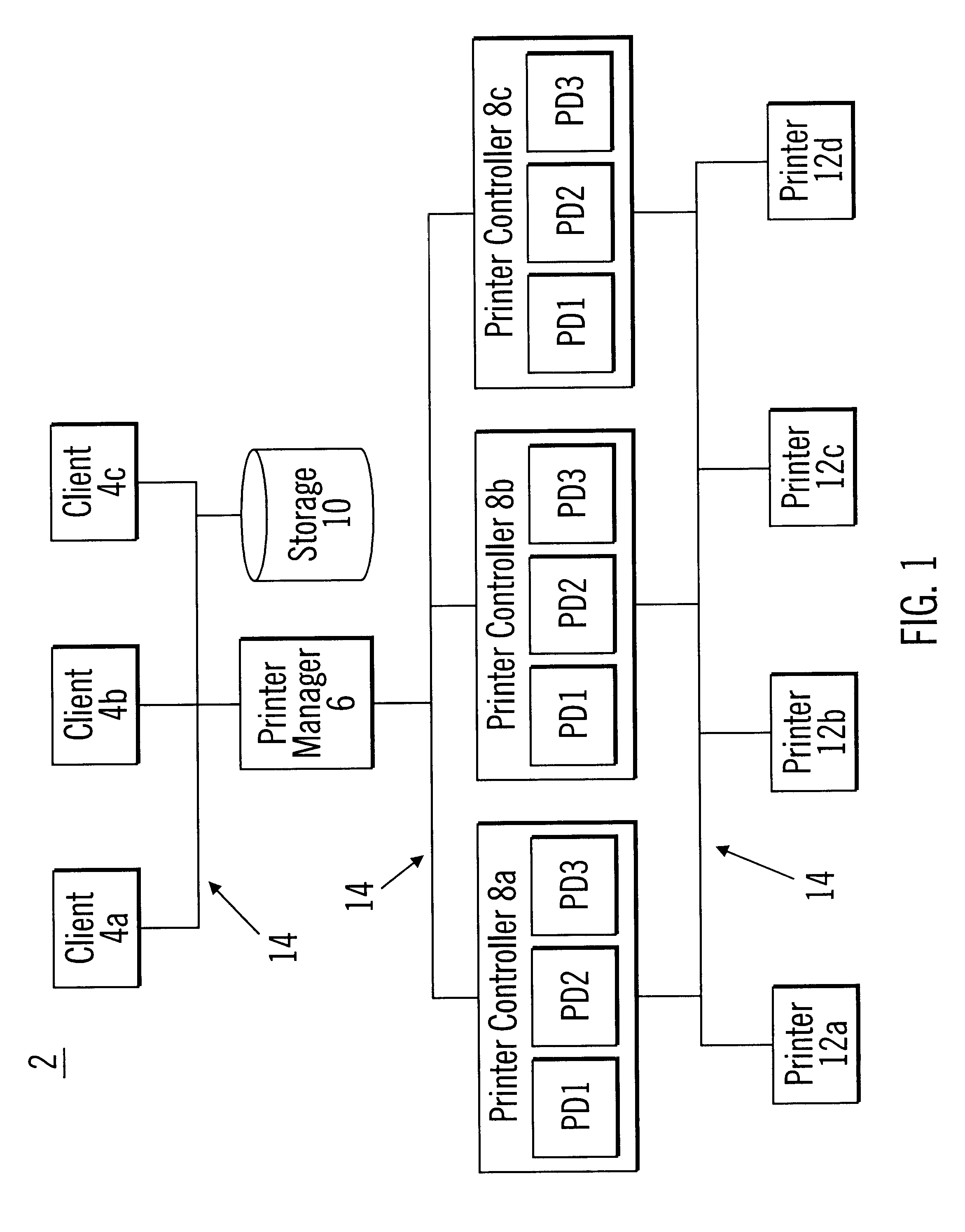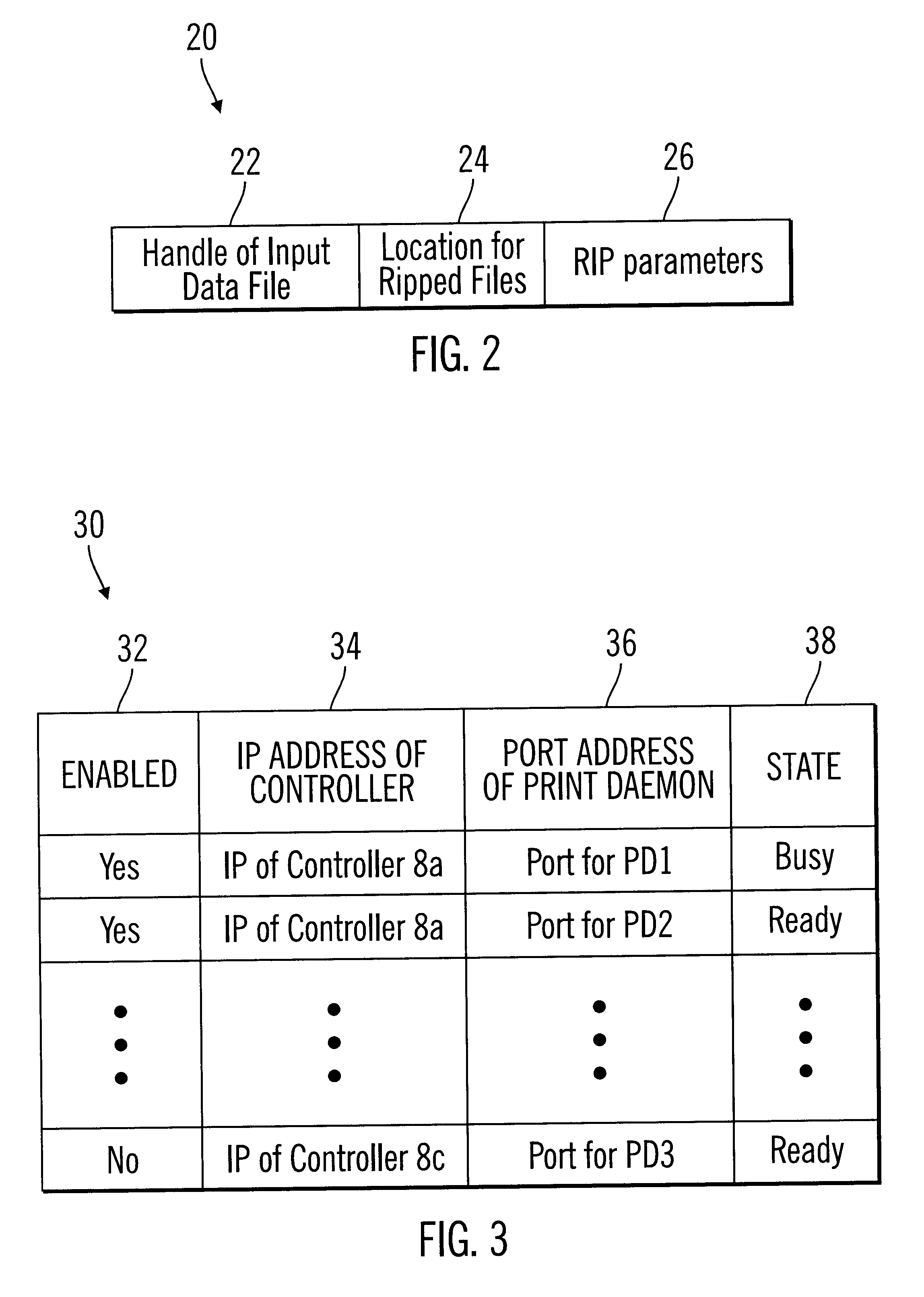Load balancing for processing a queue of print jobs
a technology of print jobs and load balance, which is applied in the direction of digital output to print units, instruments, visual presentations, etc., can solve the problems of a large pdl print file that cannot be ripped, printers in the network may not be able to process the print job,
- Summary
- Abstract
- Description
- Claims
- Application Information
AI Technical Summary
Benefits of technology
Problems solved by technology
Method used
Image
Examples
Embodiment Construction
To overcome the limitations in the prior art described above, the preferred embodiments disclose a system for processing a print job. A processing unit receives a plurality of print job files, wherein each print job file is associated with a data file. The print job files are associated with a queue of print job files. The processing unit selects a print job file in the queue and processes a data structure indicating a plurality of transform processes and the availability of each indicated transform process to process a data file. The processing unit selects an available transform process in response to processing the data structure and indicates in the data structure that the selected transform process is now unavailable. The transform process processes the data file associated with the selected print job to generate a printer supported output data stream.
In further embodiments, a plurality of transform processes are implemented in a plurality of processing units. In such case, the...
PUM
 Login to View More
Login to View More Abstract
Description
Claims
Application Information
 Login to View More
Login to View More - R&D
- Intellectual Property
- Life Sciences
- Materials
- Tech Scout
- Unparalleled Data Quality
- Higher Quality Content
- 60% Fewer Hallucinations
Browse by: Latest US Patents, China's latest patents, Technical Efficacy Thesaurus, Application Domain, Technology Topic, Popular Technical Reports.
© 2025 PatSnap. All rights reserved.Legal|Privacy policy|Modern Slavery Act Transparency Statement|Sitemap|About US| Contact US: help@patsnap.com



